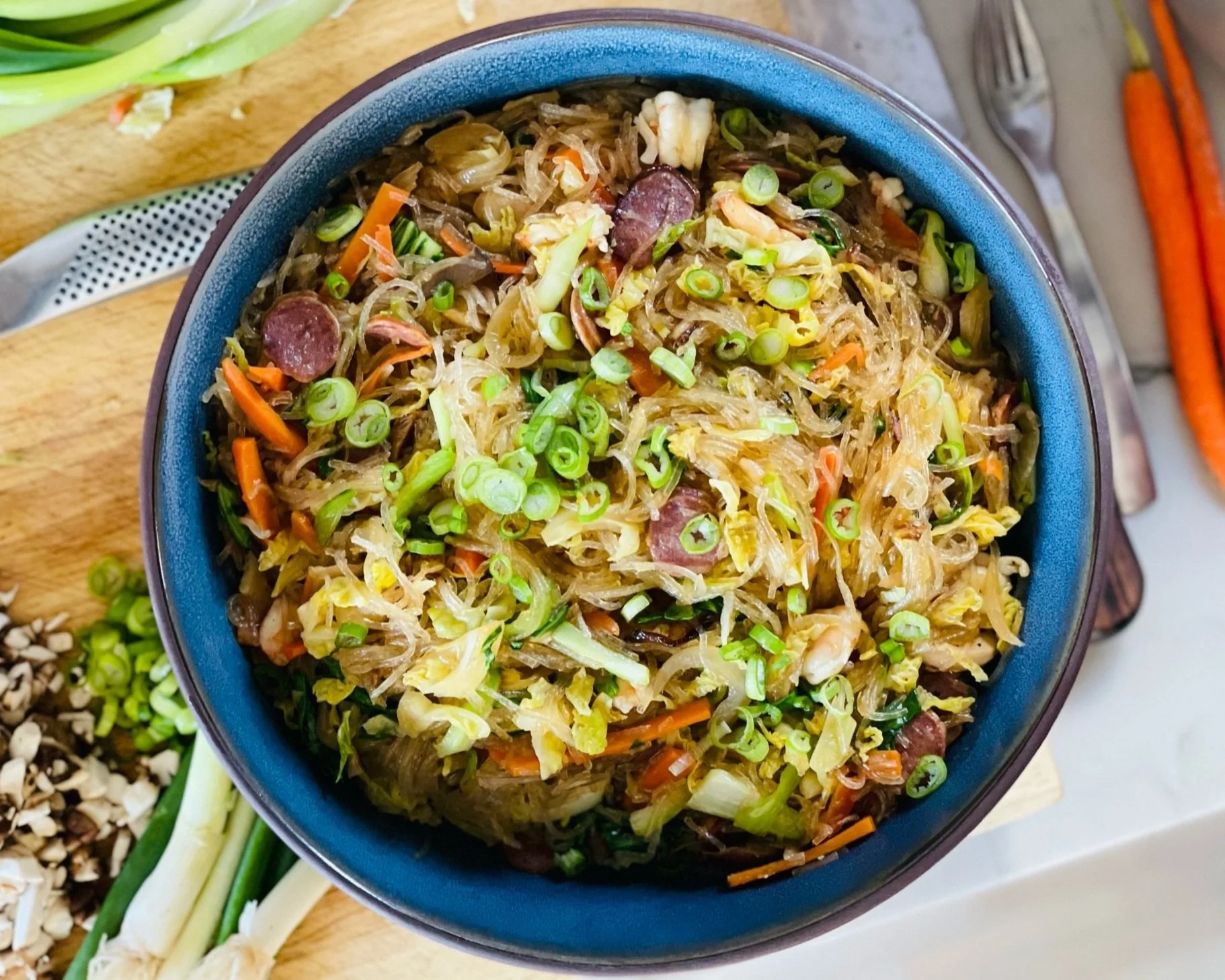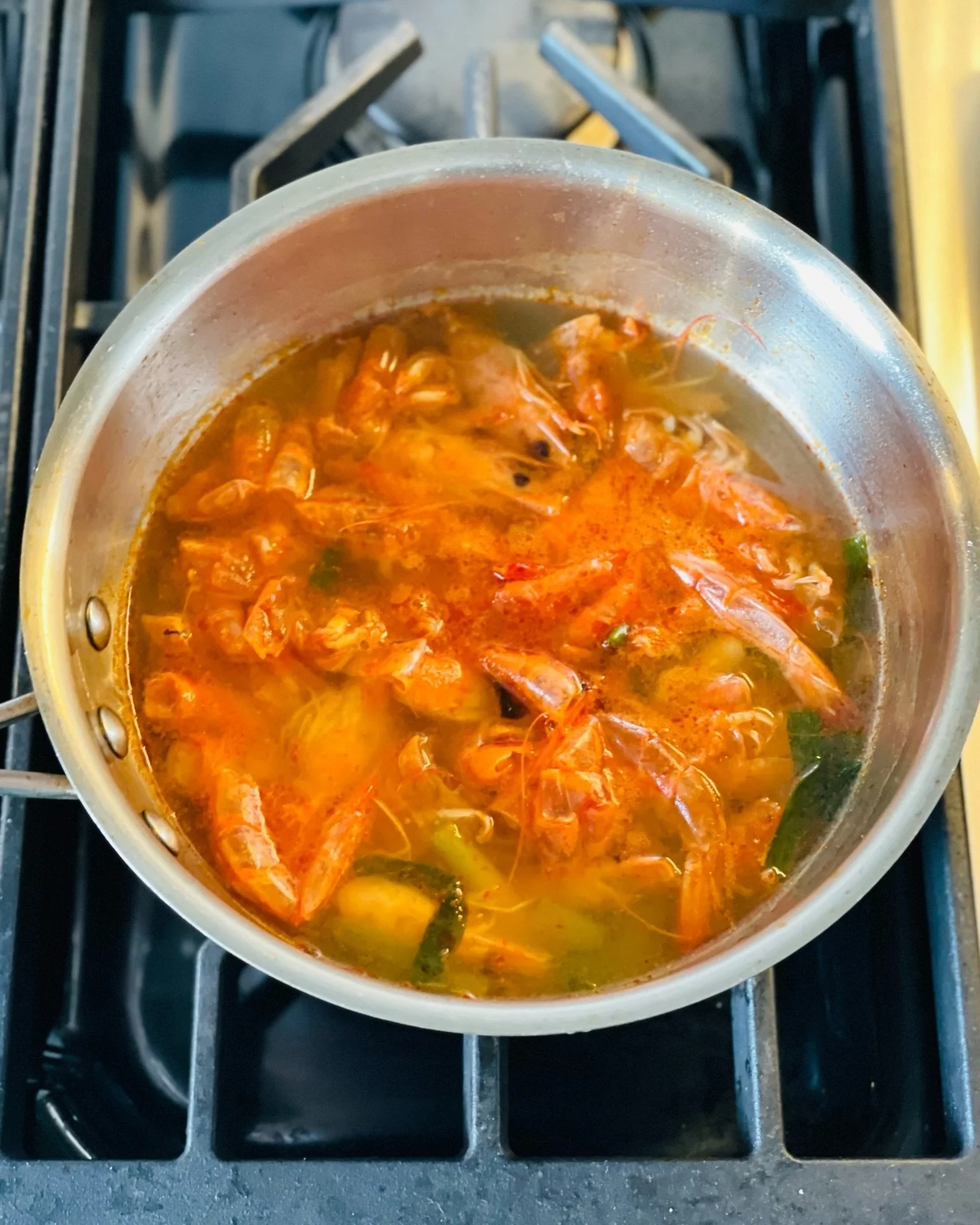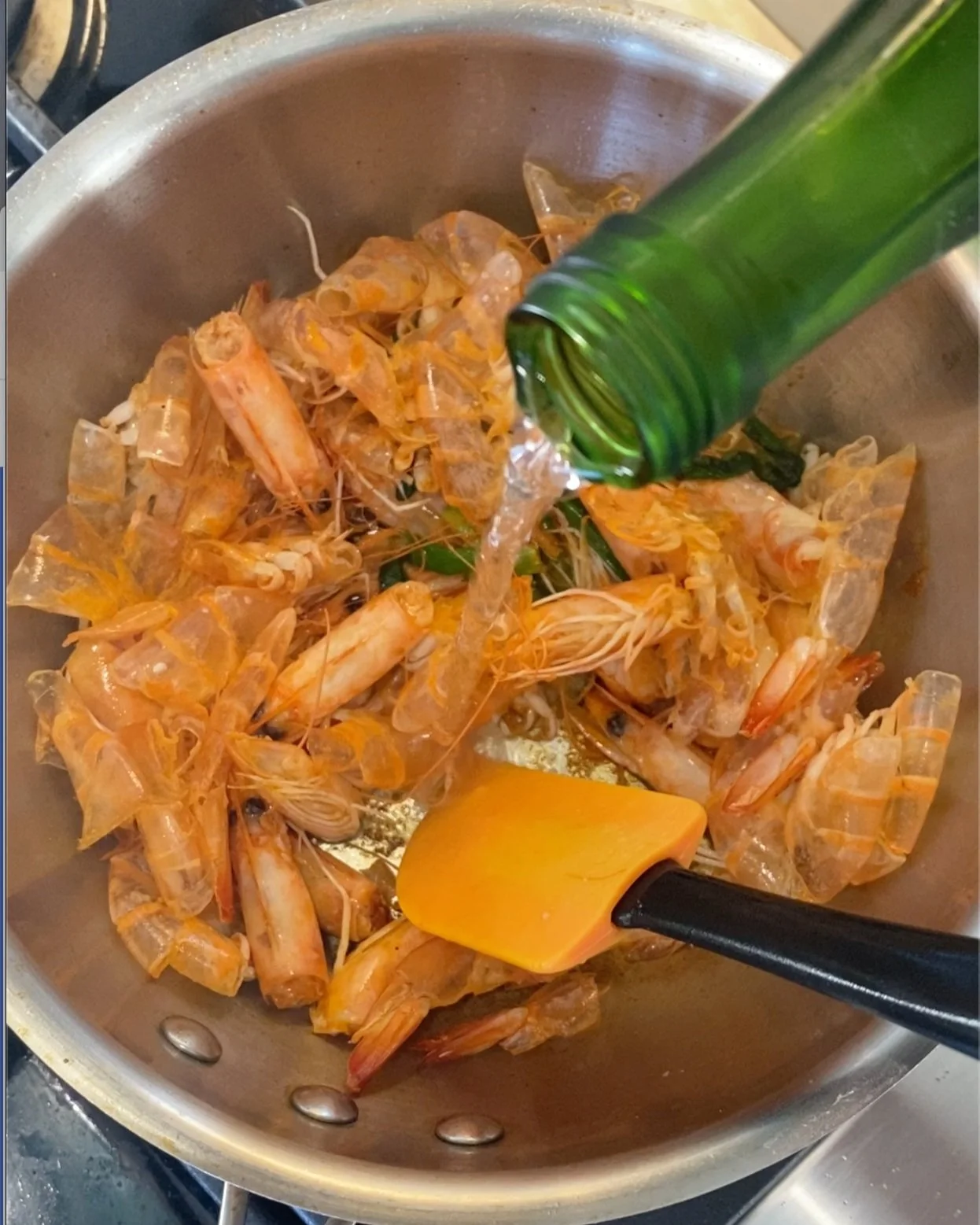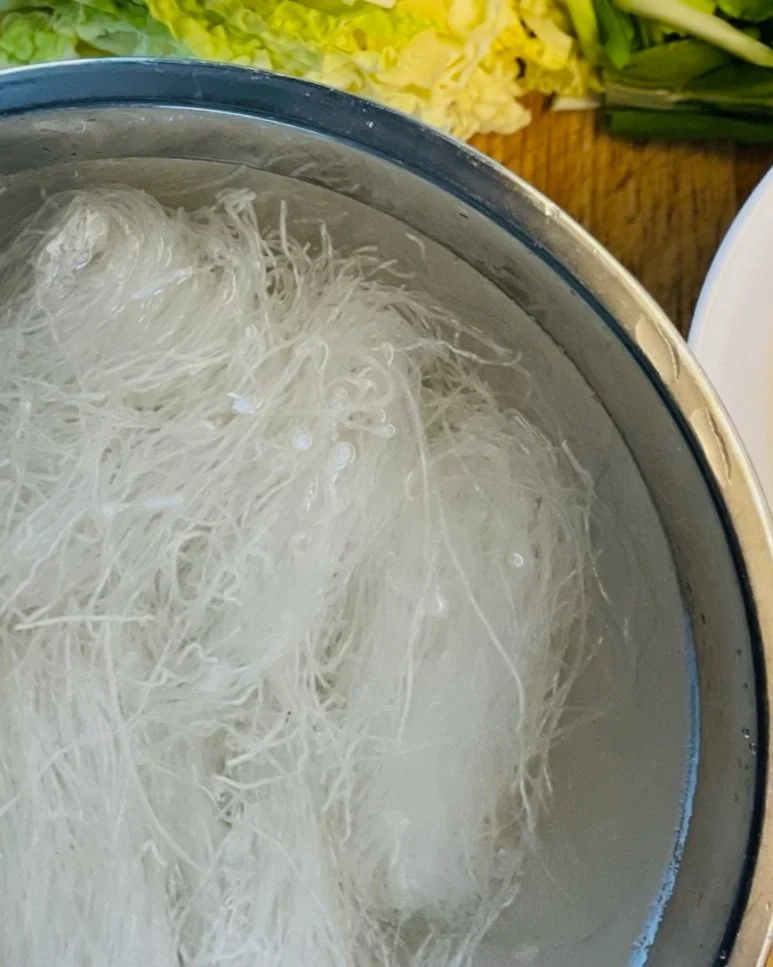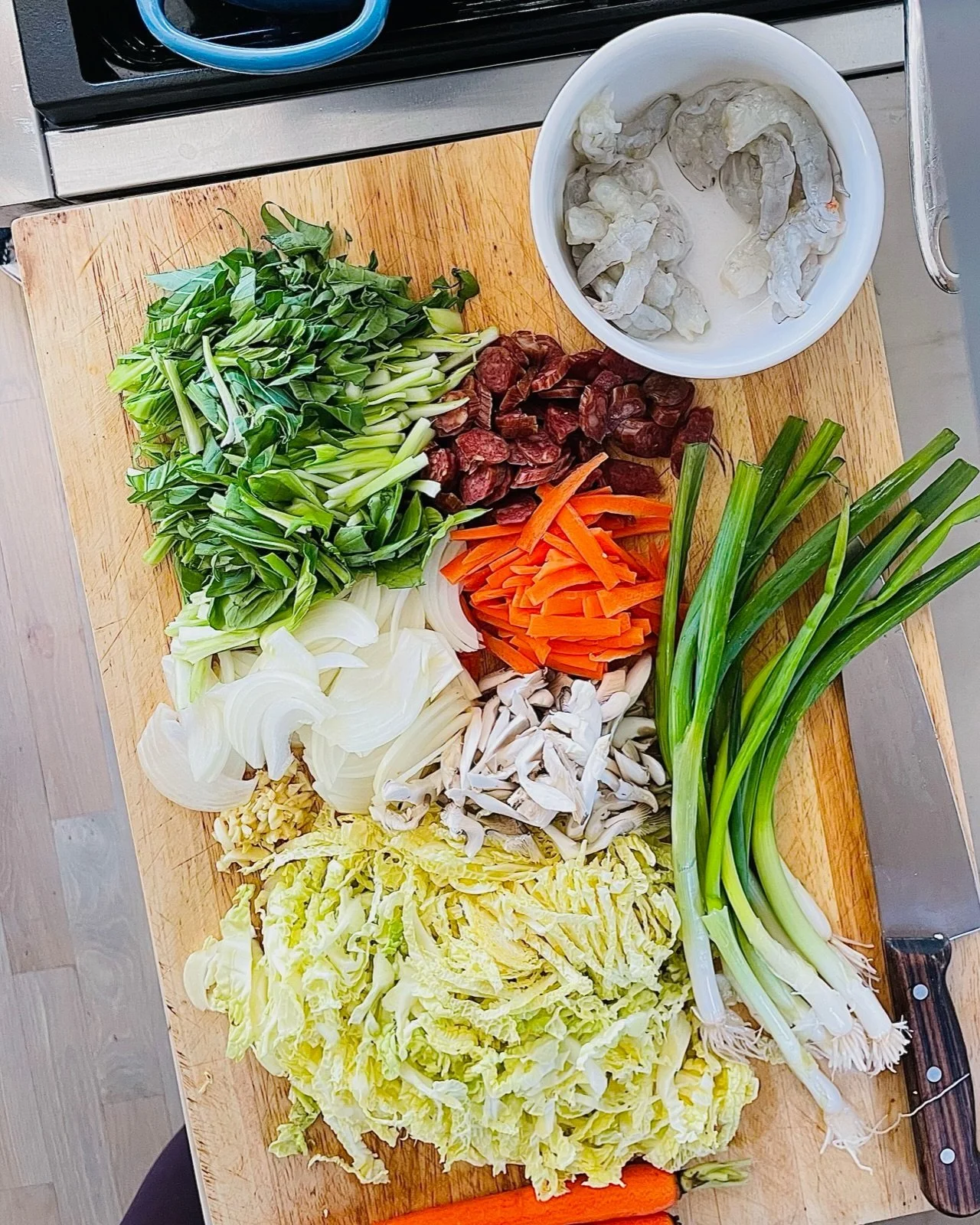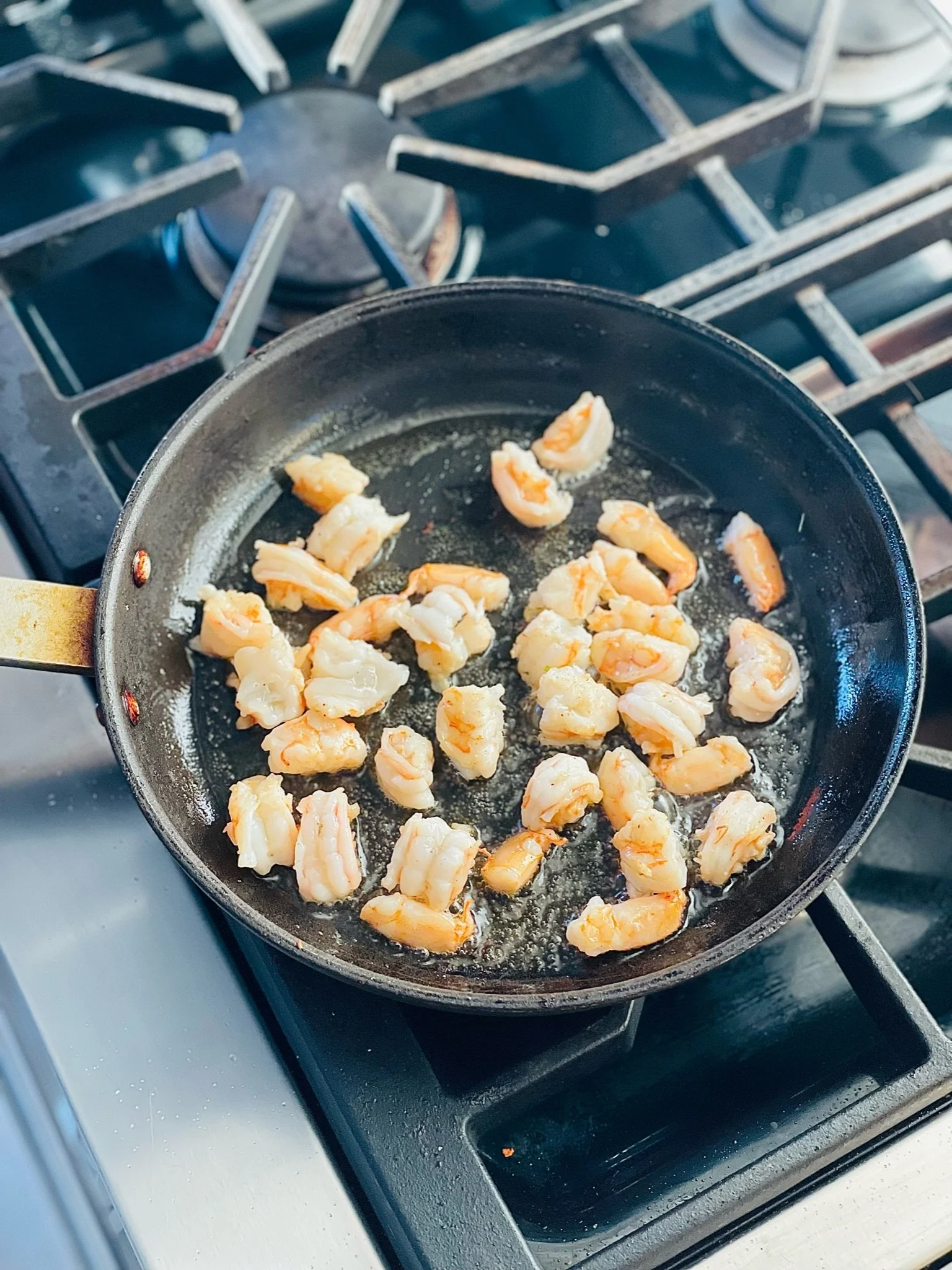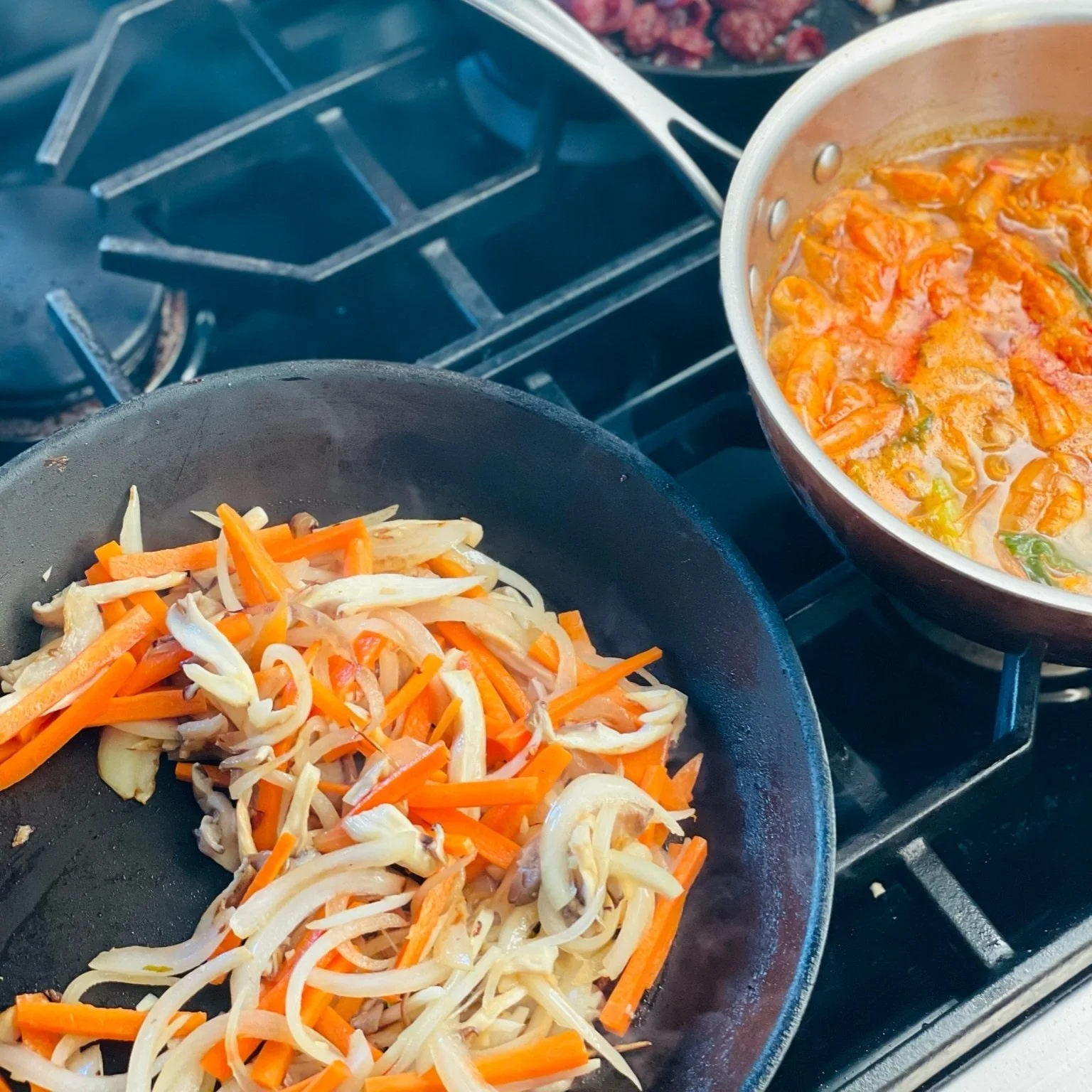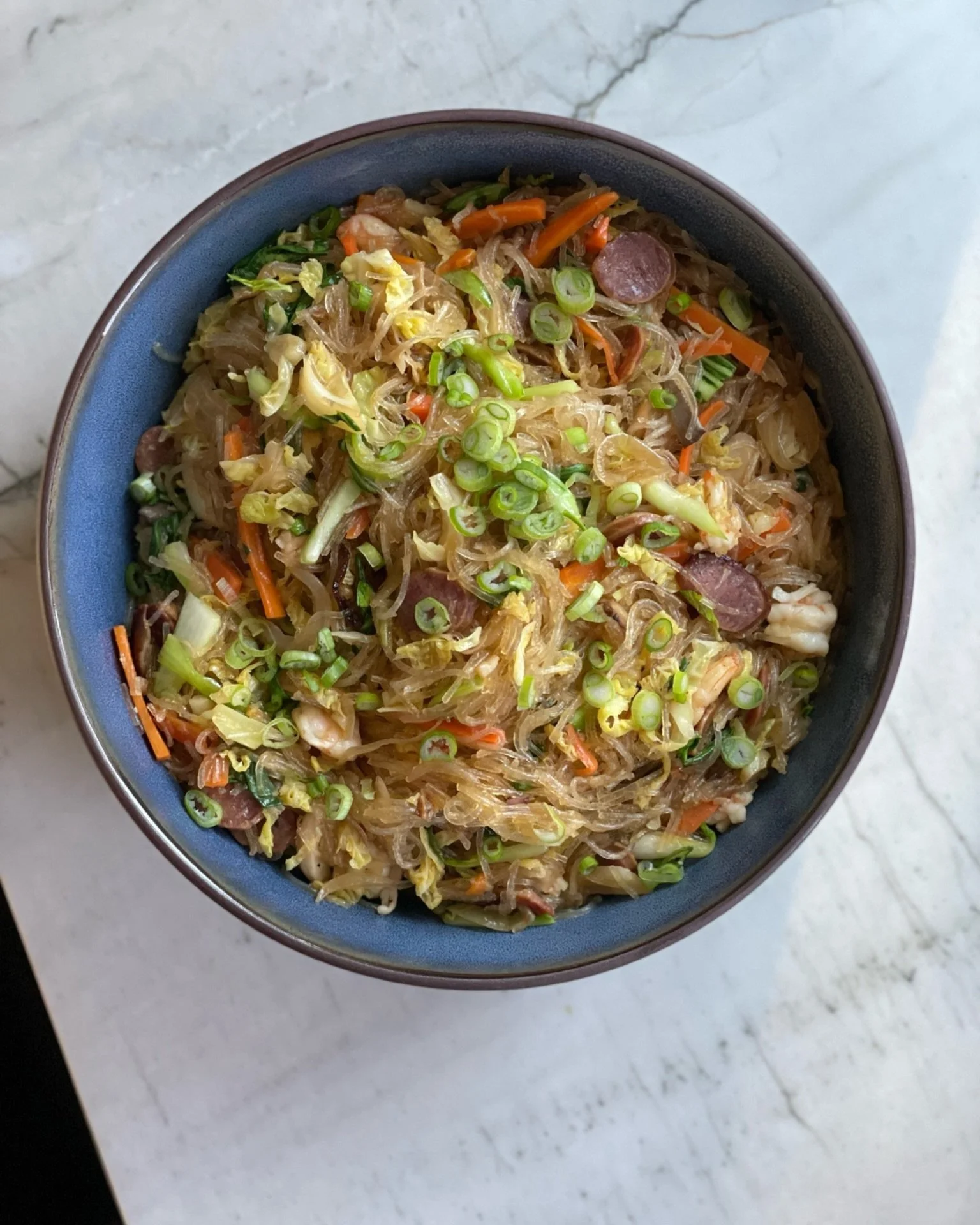Pancit Guisado
Pancit Guisado
I must admit, this is probably not on my “Top 10” if you ask me what my favorite Filipino dishes are. I think it has a lot to do with going to many Filipino gatherings through the years and eating mediocre versions of this dish. Among all of the Pancit dishes, I have always been more of a Pancit Palabok fan. Unfortunately, along with Adobo and Lumpia, Pancit is the other dish most people in America are more likely to identify if you mention Filipino food and that always frustrated me because there is so much more. When I recently went home to the Bay Area, I spent some time with my Tita Lydia discussing our family’s immigration and we also spent some time documenting our family recipes and she ended up making this dish. It reminded me that it can be delicious if you take some care in preparation but it is still a very easy dish to make. I decided to give it a try at home and I absolutely fell in love with it again. A huge reason is simplicity and adaptability and it is certainly a dish you can probably whip up with ingredients that are already in your pantry if you have the basic Asian staples.
The take away is really the method of how to make this dish. It is flavored by stock, oyster sauce, soy sauce and fish sauce. I find that using fresh shrimp stock really hits the right notes for me. It has a ton of umami. This can also reduce the shelf life of the dish because it is made with shellfish so if you are making this and are wanting left overs for a few days, a chicken or vegetable stock will help it last longer. I know in our household, this will barely make it to a second day so I use freshly made shrimp stock. This dish comes together fast once you have all your mise en place. I don’t love over cooked ingredients so I cook the protein and set it aside, cook the vegetables and set it aside then bring the stock and the noodles together and then add everything in. This keeps the pancit vibrant and all the ingredients are cooked to the right done-ness.
It’s a dish that is very flexible. You can really vary the noodles, the protein, and the vegetables. The noodles I use are the traditional Bihon or thin rice noodles. Tita Lydia actually loves Yakisoba noodles. This has a lot to do with the quality of rice noodles not being very good when she first immigrated to the US and Yakisoba was what she could find at the grocery store back then so that informed her Pancit. These days, we are lucky with more choices and also better noodle quality so we don’t have the same issues. Regarding the protein, I love the classic shrimp and pork combination. I always have Lap Cheong or Chinese Sausage so I love using this. You can also use pork belly or even bacon. My mom’s favorite is chicken so she poaches chicken, shreds it and adds it in and in a pinch, she has also used store bought rotisserie chicken. If you are vegetarian, this dish is one of the easiest Filipino dishes to adapt and still have a very delicious dish that keeps it’s taste integrity. It really is for everyone.
To eat, it’s amazing when just cooked but it is also a dish that is delicious at room temperature which is why it is a popular party food. If you have the ability to eat some the next day, I think it gets even better because the flavors start to meld even more. I especially love eating it in a hot Pandesal with butter similar to how you would eat a Yakisoba Pan.
So have I changed my mind about this being on my “Top 10”? I am not sure but I can say that I love it more when I make it and sweat the details. I am also bringing this into my weeknight rotation. Give it a try and let me know what you think.
❤️Tricia
INGREDIENTS
8 oz Thin Rice Noodles*
12 pcs Head on Shrimp, peeled, deveined and cut into 3 pieces (reserve shells and head for stock)*
3 pcs Chinese Sausage, thinly sliced diagonally
2 medium Carrots, sliced in 1 inch match sticks
1/2 Cabbage, sliced thin
3-4 pcs Baby Bok Choy, stems separated from leaves, sliced thin
1 cup Mushrooms, sliced (Shiitake, Oyster or Porcini)
1/2 medium Onion, sliced thin
2 cloves Garlic, minced
1 tsp Black Pepper, freshly ground
1 tsp Kosher Salt
2 tbsp Oyster Sauce
2 tbsp Fish Sauce
3 tbsp Soy Sauce
2 tbsp Neutral Cooking Oil (+ more as needed)
2 1/2 cups Shrimp Stock*
2 Scallions, green ends chopped for garnish (reserve the stems for stock)
1 Lemon, cut into wedges (we love Meyer Lemons, if available)
NOTE: This recipe serves 4.
*NOODLES - We prefer thin rice noodles. This is traditionally made with Bihon or Rice Stick Noodles but this recipe is flexible to other noodles like Canton or Flour Noodles and Miki or Egg Noodles. Sometimes Bihon and Miki are combined. In a pinch, Yakisoba noodles also work extremely well (some local favorites are from Umi Organic and New Seasons).
*SHRIMP - Locally, in Portland you can easily find Head On Shrimp at HMart and ABC Seafood) if it is not available in your local market. It is also possible to use frozen and cooked shrimp or headless and raw shrimp. You can simply use Chicken or Vegetable Stock in place of Shrimp Stock.
*SHRIMP STOCK - It is traditional to use Shrimp Stock in this recipe. To make this, head on shrimp is necessary and the shells and head need to be reserved for the stock. If that is not available, simply substitute with Chicken or Vegetable Stock.
*TO MAKE IT VEGETARIAN - Omit the Chinese Sausage & Shrimp. Utilize Vegetable Stock instead of Shrimp or Chicken Stock that is recommended in the recipe.
METHOD
STEP 1
MAKE THE SHRIMP STOCK.
Peel and devein the shrimp, reserving the shells and the shrimp heads. Set the shrimp aside. In a sauce pan, heat up a little oil and sauté the scallion stems, shrimp shells and head until they are an orange color. Deglaze with water 3 cups of water, season with salt and bring to a boil. Once it boils, turn the heat down and let it simmer on medium low. Skim any impurities that may rise to the top.
STEP 2
SOAK THE RICE NOODLES.
If using rice noodles, soak the noodles in water until the noodles are pliable (about 10-15 minutes) then drain and set aside. If using other noodles, prepare to package direction.
STEP 3
MISE EN PLACE. GET THE INGREDIENTS READY.
Like any stir fry dish, it comes together really fast. Prepare your vegetables and set them aside on the cutting board. Prepare your protein by slicing the Chinese Sausage and segmenting your shrimp, seasoning it with a few pinches of salt and set both aside in separate bowls. In another small bowl, combine the soy sauce, fish sauce and oyster sauce.
STEP 4
COOK THE PROTEIN.
In a wok or a large sauté pan, heat up 2 tbsp of oil and brown the Chinese Sausage then remove and set aside. In the same pan, cook the shrimp on both sides until they are pink then remove and set aside.
STEP 5
COOK THE VEGETABLES.
In the same wok or sauté pan, ensure there is enough oil left over from cooking the sausage and shrimp to cover the bottom of the pan. Add more oil as needed. Heat up the pan and sauté the onions until they are soft and translucent then add the garlic and mushrooms. When mushrooms have softened, add the carrots, the cabbage and the bok choy stems. When the vegetables have cooked but are still vibrant, add in the bok choy leaves and turn off the heat. Mix thoroughly and set aside.
STEP 6
BRING IT TOGETHER.
Using the same wok or sauté pan, add 2 cups of shrimp stock using a strainer to keep out all the shrimp shells and aromatics that flavored the stock. Bring the stock to a boil. (If using chicken or vegetable stock, simply add it to the pan and bring to a boil). Once it boils, turn the heat down and add the rice noodles. The rice noodles will absorb the stock. Once the stock is almost absorbed, add the sauce, the vegetables and the protein back in and mix thoroughly until the Pancit is dry. Taste and adjust seasoning as needed using either fish sauce or salt as it suits your taste. If the Pancit gets too dry, feel free to add the remaining stock as needed.
STEP 7
TO SERVE.
Transfer to a serving bowl and garnish with scallions. Serve with a lemon wedges and enjoy!

